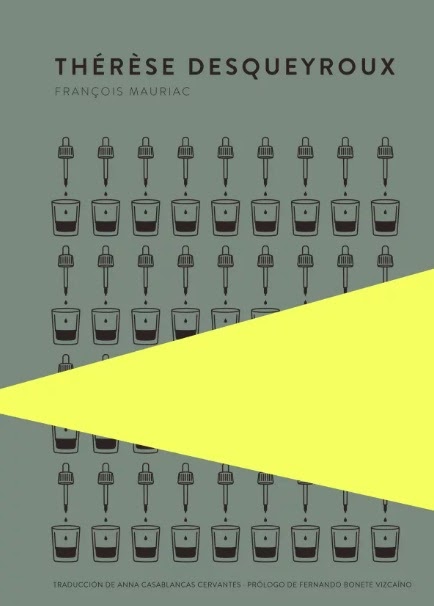
Original language: French
Original title: Thérèse Desqueyroux
Translation: Anna Casablancas Cervantes
Year of publication: 1927
Valuation: Highly recommended
A young François Mauriac was a witness, in 1906, at the trial of Henriette-Blanche Canaby, a woman who tried to poison her husband. Mauriac, who would win the Nobel Prize for Literature in 1952, was fascinated for years by the case and, above all, her accused, to such an extent that in his head he outlined a story inspired by both. This story would take the form of a novel in 1927 and would be titled, according to the name of its protagonist, Thérèse Desqueyroux.
Thérèse Desqueyroux Not only would it become Mauriac’s most famous work, but it would be one of those that would have the greatest impact on his French compatriots. Such was its success that Mauriac would write three sequels: The end of the night, Therese at the hotel y Thérèse and the doctor. Although I warn that, as I understand it, these works are not as good as their predecessor and, in addition to overexplaining the character, they give him a somewhat forced redemption arc.
Having clarified this context, let me tell you that Thérèse Desqueyroux It is one of those novels released during the fertile 20th century that have ended up becoming undisputed classics of Literature. To its impeccable yet expressive workmanship we must add the fascination aroused by its protagonist and the interest of his plot.
But first of all, let’s summarize Thérèse Desqueyroux. The heroine (if such a disturbing and disturbing person can be called that) of this story has been accused of having tried to poison Bernard, her husband. He testifies in her favor, guaranteeing her acquittal, in order to prevent the scandal from staining the name of her family.
Intriguing, right? Well now let’s list the numerous virtues of Thérèse Desqueyroux:
- Its density (not at all at odds with how fast it is read). And in just 120 pages, Mauriac communicates much more than other writers achieve with double the length.
- Its absence of uplifting tone or moralizing ending. Although Mauriac was Catholic, he did not let religion intrude into his novel, at least not in a direct and invasive way.
- The ambiguity of the whole. It perfectly captures the obliquity of the human being and allows the reader to draw their own conclusions. Why did Thérèse poison her husband? What kind of ambivalent bond does she maintain with her father? What exactly did she feel towards Anne, her childhood friend?
- His narrative style. In addition to using a syntax that is not afraid of unfinished sentences, it uses vigorous expressive resources. As a result we get a feast of brilliant passages. If you don’t believe me, read the interactions between Thérèse and Anne on pages 46 and 47.
- The extremely complex characters he portrays. Furthermore, despite how hateful they are, she makes us empathize with them, especially in the case of Thérèse or Bernard.
- Her ability to get us into Thérèse’s head and immerse us in her psychology, her memories and her contradictions, or what the narrator summarizes as “that exhausting return to herself” (pg. 144).
- His criticisms, both moral and social, always presented with subtlety and equanimity. Above all, I value those that point out how suffocating institutions such as marriage or the family can be for some people, especially for women who are expected to have children “in order to annul themselves in them” (pg. 138).
- Its rarefied, suffocating and stagnant atmosphere. This is promoted both by the settings and social conventions and by the moods of the protagonist. An example of a particularly successful one resides on pages 124 and 125.
- The recurrent use of pine trees as a metaphorical element.
I would only have one fault with this novel that, in my opinion, borders on perfection: that it wastes Thérèse’s father, since after his introduction he has no presence or impact in the second half of the story.
- The quality of the book’s materials (hardcover, firm binding, interior illustrations…).
- The beautiful cover. It maintains the design of the publisher’s catalogue, but at the same time alludes to Mauriac’s novel through image and color.
- The very interesting prologue by Fernando Bonete Vizcaíno. In addition to analyzing Mauriac’s work, it contextualizes it within the saga that the character would begin and the literature of Catholic writers.
- The polished translation of Anna Casablancas Cervantes (which, by the way, respects the names of the characters instead of calling them Teresa, Bernardo, Ana or Juan, as happens in other editions).
- The emotional note from the editor, where Jan explains the reasons that prompted him to recover this classic of French literature.
Summarizing: Thérèse Desqueyroux It is highly recommended. In my opinion, it has not aged one bit in terms of content and form. There are several film adaptations, but I rarely get interested in them when the literary material is of such quality.
Source: https://unlibroaldia.blogspot.com/2024/03/francois-mauriac-therese-desqueyroux.html


